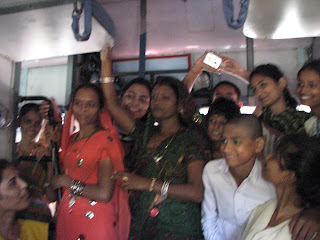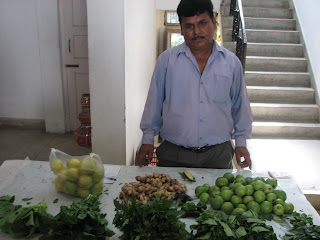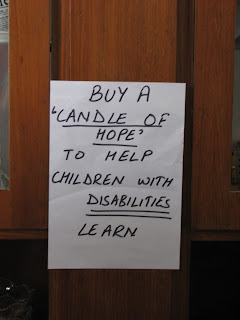Navdanya and the Organic Market
“We are teaching the farmers to grow money.” Khali Ji – Bija Vidyapeeth Manager
Navdanya's two main missions are to teach farmers to grow organically and to save seeds to preserve biodiversity in India. My observation while volunteering at Bija Bidyapeeth is that the organization is very successful in both of these missions. I have seen and been a part of a few farmer trainings, compost workshops, and seed saving workshops here on the farm. There are so many great minds working on these projects, yet I can't help but develop some of my own criticisms. Delicious organic food such as dal, vegetables, nuts, and brown rice are grown right here on the farm and consumed gratefully on a daily basis by the staff and volunteers. However, I cannot help but see the disconnect between Navdanya and the local community. Where are the CSA's? Why are these children so tiny? Are any of the vendors outside of the gate selling organic? Are any of the neighboring farms organic? Do any of the neighboring farms use chemicals? Well, I'm about to find out. I hope.
Organic farming is important to India because it is a movement away from chemicals used in conventional farming that pollute precious water resources. The organic methods Navdanya is sharing with farmers also improves long-term soil fertility and quality. Organic production provides farmers a fair price and healthy working environment. Since my initial interest in food systems during my undergraduate years I have always agreed with the benefits of organic food. However, since living in Montana and observing the importance of local food within communities, I have grown to appreciate the benefits of local food in creating an increasingly important transparent food system. This is why, when learning more about the Navdanya model I have many questions regarding its sustainability and areas where improvement might be needed. Organic is a great start, but I don't see any long-term viability in just trying to grow organic.
These questions have helped me and a couple of other interns organize a project getting to know more about the local community and the disconnect, if there is one, from Navdanya. And if there is a disconnect is it the responsibility of the farmer or the consumer to gain access to organic food? Or is it the responsibility of no one? Is the issue a matter of education? Of course organic can't be forced on anyone, but fair access to this ethically produced food surely must be an option. With the help of the Navdanya staff and translators, another intern and I will be setting out to interview neighboring farms, not only the ones Navdanya works with, but also the farmers Navdanya has not been able to reach, or those who can't be convinced to change.
In the beginning stages of this project I have so far learned that organic farming appears to be more of a niche in the market, rather than a movement to change food systems positively. Although its a rather blunt way of saying it, I have learned from the staff here, that the main incentive for farmers to grow organically is to make more money, rather than save the world. And while I agree that farmers do in fact deserve more money, the benefits of organic food are not equally shared among consumers. According to the Navdanya staff, Navdanya's organic products are marked 20-25% more expensive than non-certified food products. Also, all of Navdanya's organic trained farmers (500,000 around the India!) sell their products to Navdanya, which are then, in turn sold to urban markets where Navdanya can get the highest price for organic.
The ultimate goal of the interviews and project is to get an overall idea of the local food system around Navdanya. Is any of the local food farmed organically without being certified? And is this food sold to the local community? Do any of the farmers around Navdanya farm with chemicals? Do any of the produce stands in Dehradun sell organic produce? Would the local community buy this produce if they knew it was organic? And do they know the benefits of farming organically? As I continue to enjoy my time here in India I will be focusing on these questions and hope to develop a better understanding of different options for creating a viable food system that is fair for both the producer and the consumer. While my economic background is slim to none I know this is also an important area to understand. I hope to continue developing these ideas while I am here especially since many communities in India seem to be divided on this issue. However, thanks to the work of Navdanya organic farming is an actual option for India and many communities are learning the benefits and able to question other more conventional farming practices.
 |
| Pictures from the community around Bija Vidyapeeth campus. |





























